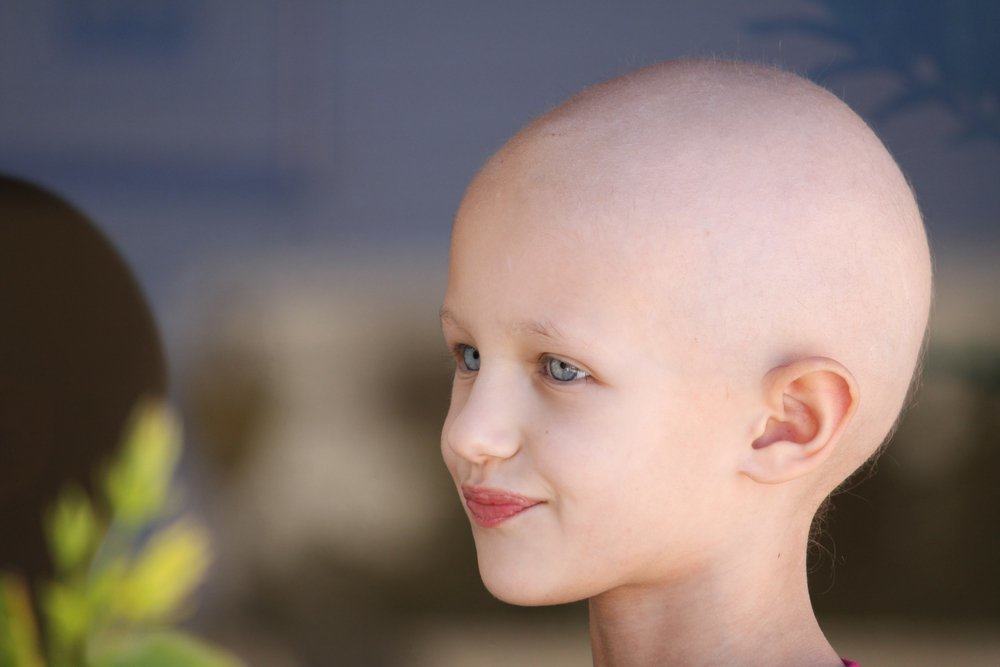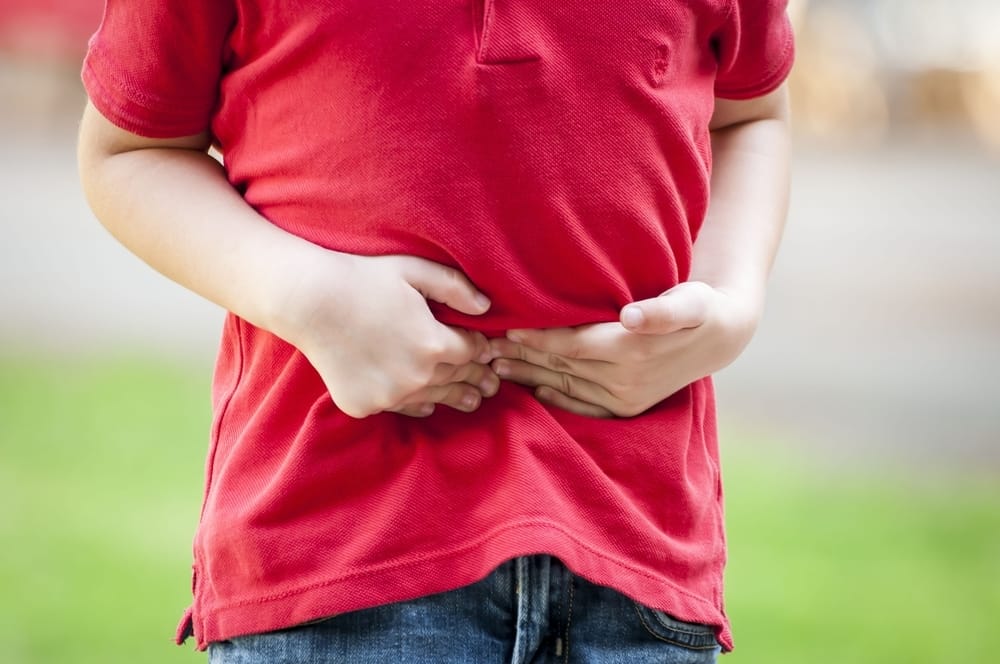Contents:
- Medical Video: Pediatric Cancer Research at Nemours Center for Cancer and Blood Disorders
- Definition of cancer in children
- Cancer in children in Indonesia
- Can cancer in children be prevented?
- Sign if the child has cancer
- The types of cancer that most often occur in children
- 1. Leukemia
- 2. Cancer of the central nervous system
- 3. Neuroblastoma
- 4. Wilms tumor (nephroblastoma)
- 5. Lymphoma
- 6. Rhabdomyosarcoma
- 7. Retinoblastoma
- 8. Bone cancer
- Examination and treatment of cancer in children
Medical Video: Pediatric Cancer Research at Nemours Center for Cancer and Blood Disorders
Cancer is a term for degenerative diseases characterized by the development of abnormal cells that damage and extract nutrients from a person's body. This causes various other health complications, even death. Adults are a group that is prone to cancer because the risk of cancer can increase with age. Then, what about cancer in children?
Definition of cancer in children
The definition of cancer cases in children is an incidence of cancer that appears at the age of children to adolescents. Almost every cell in the human body can develop abnormally into a tumor and cancer. However, the type of cancer in children is usually different from cancer experienced by adults.
If cancer in adults is caused by consumption patterns and lifestyles, cancer in children is triggered by a gene mutation. This causes changes in DNA from body cells from birth, or even when the child is still in the womb. Genetic abnormalities in the family such as Down syndrome and other familial syndromes can increase the risk of cancer in children. Very rare cases of cancer in children are caused by parents having cancer genes, but gene mutations can occur due to radiation and exposure to cigarettes when the child is still in the womb.
READ ALSO: What Is the Result In Fetus If You Smoke While Pregnant?
Cancer in children in Indonesia
According to the Indonesian Ministry of Health data until 2013, new cases of cancer in children reached 11,000 per year. Most or about 30% of cases of cancer in children that occur in Indonesia are leukemia or cancer that occurs in white blood cells, then followed by cancer that attacks the central nervous system. In addition to gene mutation factors, the causes of child cancer in Indonesia can occur due to exposure to chemicals and infectious diseases such as hepatitis B and HIV in children.
Can cancer in children be prevented?
Unlike most cancers that attack adults because of risk factors for unhealthy lifestyles, cancer in children does not have a changeable risk factor. Gene mutations that are the cause of cancer in children can be caused by the loss of the ability of cells to inhibit and stop abnormal growth. Even so, parents can minimize the risk of cancer that their child will experience before birth, by planning a pregnancy carefully, maintaining reproductive health, not smoking, avoiding radiation exposure, and early detection of pregnancy health.
READ ALSO: Factors That Trigger the Risk of Containing a Down Syndrome Baby
Sign if the child has cancer
Cancer cases in children tend to be rarer than cancer in adults and the symptoms will be difficult to distinguish from other health problems. However, parents should be vigilant and pay attention to children's health conditions if some of the following signs often occur and last for a long time:
- The occurrence of swelling in the child's body
- The child looks pale and often looks limp
- Children often experience injuries, or there are wounds that do not heal
- There are complaints of pain in certain parts of the body
- Look lethargic or limp when walking
- Fever without cause or infection that does not heal
- Often suffer from headaches accompanied by vomiting
- Visual impairment
- Weight loss without cause
Cancer in children does not have specific symptoms, and can vary according to the type of cancer experienced by the child. Although not caused by cancer, these symptoms need to be addressed to restore a child's health.
READ ALSO: Is it true that child cancer is more likely to heal than adult cancer?
The types of cancer that most often occur in children
There are several cancers that can and are often found in children, including:
1. Leukemia
This type of cancer occurs in white blood cells and bone marrow. Leukemia is a type of cancer in children that is the most dangerous because it causes the formation of abnormal leukocytes. The impact is the cessation of leukocyte formation, followed by disruption of platelet and erythrocyte production. Leukemia also affects the brain organs and damage to the gums, skin, bones, spleen, and testicles.
2. Cancer of the central nervous system
Tumor cells generally begin in the lower brain; cerebellum and brain stem and then spread to the spine. The impact of central nervous system cancer is a disorder of thinking and coordination, even paralysis can occur.
3. Neuroblastoma
It is a type of nerve cell cancer that can be found in various parts of the body. This type of cancer can develop in the embryo or fetus and is rarely found in children over the age of 10 years. Neuroblastoma is usually found in the abdomen which is characterized by swelling, bone pain and fever.
4. Wilms tumor (nephroblastoma)
The type of cancer that develops in one or both kidneys. Usually found in children aged 3 to 4 years, and is very rarely found after over 5 years. Symptoms of nephroblastoma include swelling of the abdomen near the kidneys, accompanied by fever, nausea and loss of appetite.
5. Lymphoma
The type of cancer that attacks the cells of immunity or lymphocytes and in the organs of the lymph nodes, tonsils and glands thymus which is located in the neck, armpit, and around the groin. Lymphoma causes swelling around the gland that contains cancer cells, and some symptoms such as excessive sweating, weakness, fever and drastic weight loss.
6. Rhabdomyosarcoma
Starting at abnormal cell growth, the skeletal muscles or muscles used to move the body. This type of cancer can be found in any part of the body that has skeletal muscle cells. Rhabdomyosarcoma is usually characterized by pain and / or clotting.
7. Retinoblastoma
Or also known as eye cancer which is only found in the age of the baby or about 2 years. Retinoblastoma can be identified by irregularities in the eye or there is a red color on the pupil due to blood on the back of the eye. Parents should be suspicious if the child's eyes look like a "cat's eye" or reflect white light if exposed to light or from flash
8. Bone cancer
Usually found when children enter puberty and adolescence. Bone cancer can occur at the end of the bone pipe in the legs and arms (osteosarcoma) and flat bones such as the waist and back (ewing sarcoma). Symptoms of bone cancer are usually in the form of pain at night or when moving bones.
READ ALSO: Eyes of Cats in Children? Watch Out for Eye Cancer Symptoms
Examination and treatment of cancer in children
Cancer in children can be recognized by symptoms, medical examinations and biopsies. Medical examinations to detect cancer also need to use x-ray imaging to find tumors in children. Furthermore, the body parts or tumor bumps will be taken a little to examine cancer cells, also known as biopsy examination.
There are several methods for treating cancer in children, such as radiation, chemotherapy, and surgery. Treatment efforts may be ineffective if only done with one method so that it requires a combination of both or all three methods, even in patients with leukemia need a bone marrow transplant.
Radiation treatment and chemotherapy are treatments that have side effects such as symptoms of nausea, baldness, anemia and fatigue. In addition there are more serious health problems such as the development of other cancers in the future, impaired growth, and health of the reproductive organs.
READ ALSO: 9 Side Effects That May Happen Due to Chemotherapy












